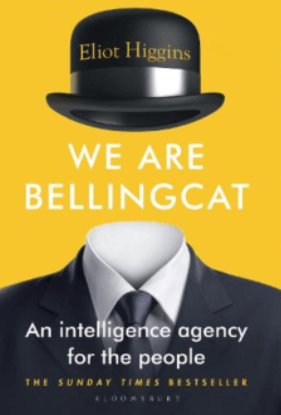 In his seminal 1999 book What are Journalists For?
In his seminal 1999 book What are Journalists For?
NYU professor Jay Rosen pointed to a plaque at the National Press Club in Washington dating from 1958 which reads:
“I believe in the profession of journalism. I believe that the public journal is a public trust; that all connected with it are, to the full measure of their responsibility, trustees for the public; that acceptance of a lesser service than public service is a betrayal of that trust.”
It is difficult to know whether that covenant of trust means anything to anyone in the profession today. If it does, it is probably to a minority of journalists doggedly fighting the good fight but likely to be constrained by the ruthless reality of ownership and the complexities of vested interests. A reality that has seen the profession bow to commercialism, slide into partisanship and, more recently, succumb to the insane culture of social media.
The troubles facing journalism would have been the last thing on Eliot Higgins’ mind when, a decade ago, sitting in his Leicester home, he began analysing photos and videos on Facebook and YouTube of the fall-out of the chemical attacks in Syria and, in 2014, the wreckage of the Malaysian Airways Boeing shot down over Ukraine.
An obsessive gamer from a military family, Higgins pried into social media accounts, watched endless CCTV footage, scrutinized photos of weaponry and geolocated images of military movements and targets. He discovered things the media weren’t picking up and proceeded to share them on his blog challenging the prevailing narratives surrounding unfolding global events.
At that time traditional journalism had still been chasing stories by extracting information through its privileged access to power and from its anonymous sources, considering what the internet was spewing as less worthy. It underestimated what was hidden in plain sight; what Higgins calls OSINT: Open-Source Intelligence.
OSINT was exploding just as media operations were shrinking. Newsrooms didn’t have the time, revenues or the qualified staff to monitor the deluge. Higgins claims they were overwhelmed whereas he had all the time and the skills – Google Earth assisting – to zoom in and to check evidence more closely. Like a latter-day David Hemmings from Michelangelo Antonioni’s Blow-Up, he enlarged and analyzed photographs and maps connecting pieces of shrapnel and mustard gas canisters to culprits and their victims.
In his thriller of a book We Are Bellingcat 1 Higgins explains how he and his network of internet sleuths expertly produced the evidence that demolished the narratives of Basher Al Assad and Vladimir Putin simply by delving deeper than established media were willing, or capable, of digging.
Higgins proved that the missile that hit the Malaysian Airlines Boeing 777 killing 298 people had been fired from a BUK missile launcher in Russian-held Ukrainian territories. He produced photographic evidence of its precise location and then tracked the BUK’s subsequent transfer into Russia – with one missile missing from its launch pad.
Mashable run the news under the headline “Group of Bloggers Unearthing MH17 Intel Quicker than US spies”2. Their work would even find its way to the MH17 tribunal in The Hague.
The journalist Peter Jukes, now editor of the Byline Times, helped christen the group by alluding to the fable of the frightened mice that tried to hang a bell around the cat’s neck to get early warning of its arrival. Bellingcat’s mission is to put bells on the necks of those preying on the truth and rattling democratic discourse.
It was Tahrir Square’s social media revolution that first promised citizen journalism but the results were shallow and chaotic. Bellingcat has raised the bar. By observing citizen journalists and their posts it corroborates witness testimonies and affirms or debunks sources; it maps networks of relationships among key actors, sorts and verifies the raw data and painstakingly assembles the stories.
Today the Bellingcat team consists of 40 staff and senior contributors. If you’ve watched the recently released documentary Navalny3, the investigation that leads to the astonishing dial-up scene where Alexei Navalny confronts the Russian agents who had attempted to assassinate him, was coordinated by Bellingcat’s executive director Christo Grozev4. And while it probes the world’s most pressing stories Bellingcat also focuses on the ones that major news outlets are overlooking or deliberately ignoring.
Bellingcat, admits Higgins, now finds itself in an unusual position: “We are not exactly journalists, nor human-rights activists, nor computer scientists, nor archivists, nor academic researchers, nor criminal investigators but at the nexus of all those disciplines”. Perhaps it is this unusual position that makes Bellingcat so appropriate to the task: Focusing on the primacy of fact not on profit or favour. Bellingcat operates as a charitable trust, transparent about its funding and strict in its editorial standards and verification practices.
Illiberal regimes and corrupt institutions will seek to subvert its work. Large sections of the public are likely to remain confused and distrustful. Yet its purposefulness and hard work against disinformation will win citizens over. Its impact may even prompt the rest of the media to snap out of their self-absorbed business model that has, for so long, corrupted their responsibility as trustees for the public.
Post-Truth, Bellingcat is animating Post-Journalism.
1. We Are Bellingcat, Eliot Higgins, 2022, Bloomsbury; see also http://www.bellingcat.com
2. https://mashable.com/archive/citizen-journalists-mh17-spies
3. Navalny, Daniel Roher (director), 2022, https://www.imdb.com/title/tt17041964
4. On 24 May the International Center for Journalism awarded Bellingcat and Christo Grozev its 2022 Innovation in International Reporting Award.
